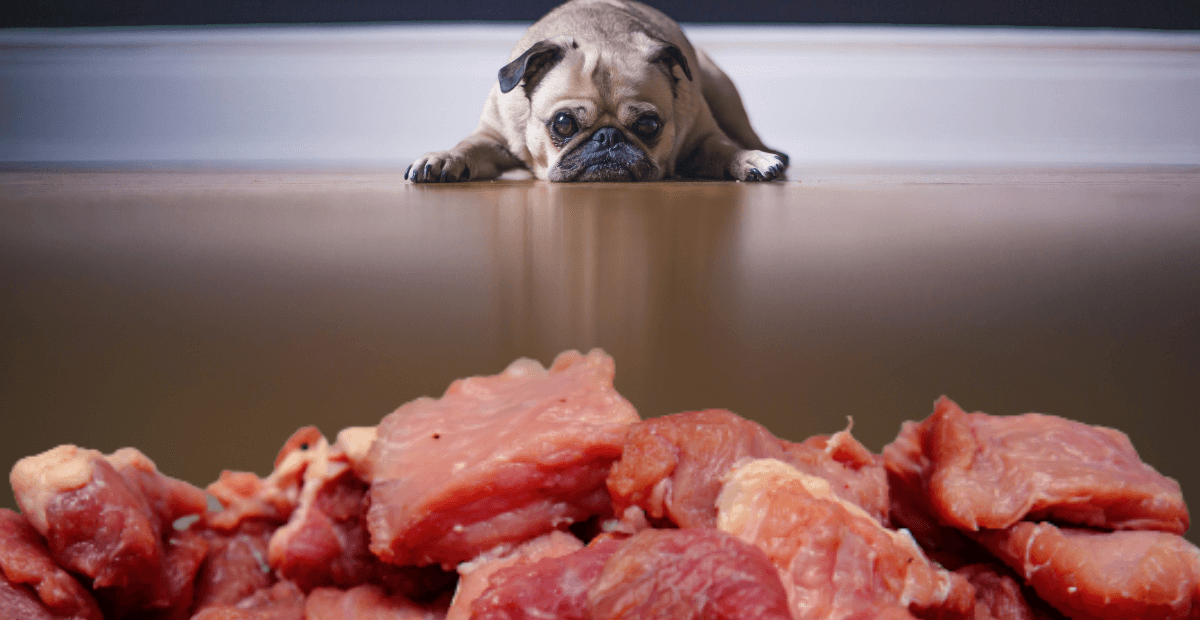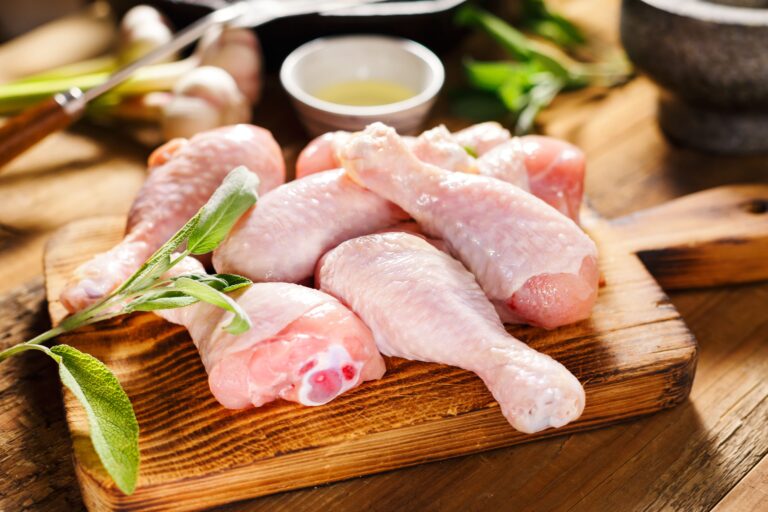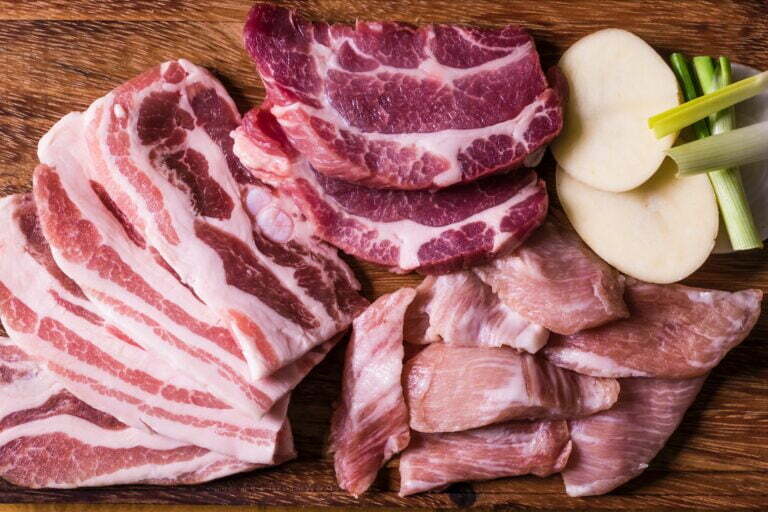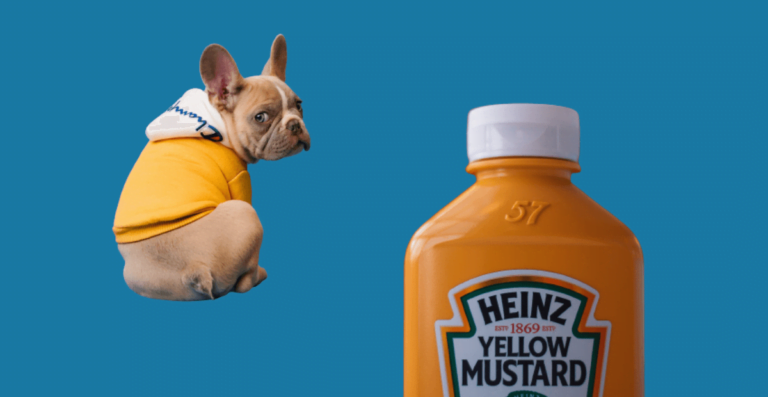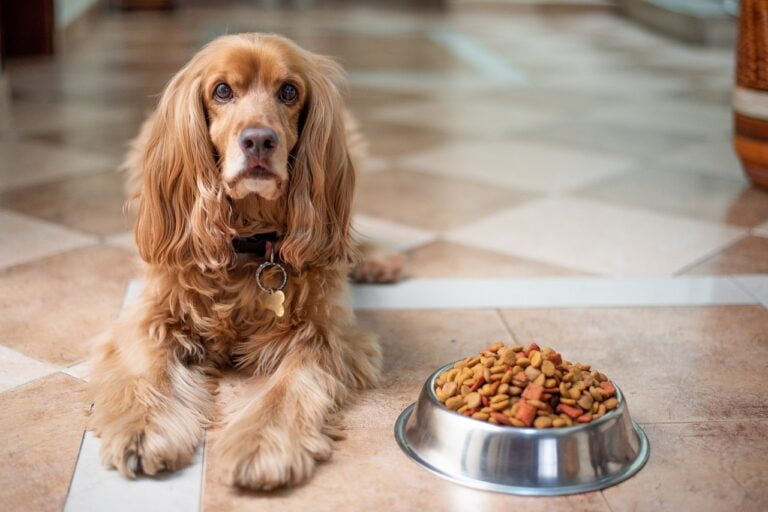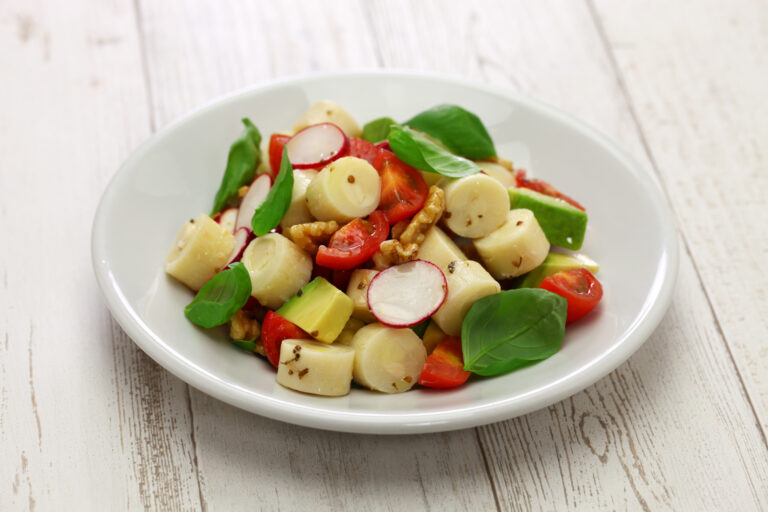Can dogs eat raw meat? | Here’s Everything you need to know now
The topic of raw meat for dogs has been a controversial one for many years. Some people believe that feeding their dog a raw diet is the best way to ensure their health, while others believe that it is too risky and could lead to health problems. There are pros and cons to both sides of the argument, but ultimately the decision of whether or not to feed your dog a raw diet is up to you.
- Can dog eat raw meat?
- The pros of feeding dogs raw meat
- The cons of feeding dogs raw meat
- Red meat or white meat, what to choose for my dog?
- What makes raw beef a good choice?
- Not all beef is equal
- How much raw beef can I feed my dog?
- Breath & Oral Health
- Improved digestion
- The best way to feed your dog raw meat
- Meat Quality & Hygiene
- How to transition your dog to a raw diet
- Are other raw foods good for dogs?
- Conclusion
- FAQ
Can dog eat raw meat?
Yes, dogs can eat raw meat. In fact, raw meat is an excellent source of protein for dogs. It is also a good source of essential vitamins and minerals.
Raw meat can be fed to dogs as part of their regular diet or as a treat. When feeding raw meat to dogs, it is important to make sure that the meat is fresh and free from contaminants. Raw meat should also be fed in small quantities to avoid digestive problems.
The pros of feeding dogs raw meat
When it comes to canine diets, there is a lot of debate over what is best for dogs: dry kibble, wet food, or a raw diet. Proponents of raw diets claim that feeding dogs raw meat is the healthiest option and provides numerous benefits.
One of the main benefits of feeding dogs raw meat is that it is more similar to their natural diet. In the wild, dogs would eat mostly meat with some organs and bones mixed in. This diet would provide them with all the nutrients they need to stay healthy.
Feeding dogs raw meat also allows you to have more control over what goes into their food. When you make your own dog food, you can choose what type of meat to use and what supplements to add in order to ensure that your dog is getting everything they need.
The cons of feeding dogs raw meat
A raw meat diet for dogs may seem like a natural and healthy option, but there are some serious risks to consider. First of all, raw meat can contain harmful bacteria that can make your dog sick.
Even if the meat is cooked properly, there is still a risk of contamination. In addition, raw meat can be very hard for dogs to digest, and they can end up with an upset stomach or even diarrhea.
Finally, if you feed your dog raw meat on a regular basis, you could actually be increasing their risk of developing joint problems later in life.
Red meat or white meat, what to choose for my dog?
There are many different types of meat that you can feed your dog, but what is the best type of meat for them? Red meat or white meat, what should you choose for your dog?
If you are looking for a leaner protein source for your dog, then white meat may be the better option. Chicken and turkey are both good sources of lean protein for dogs. However, if you are looking for a protein-rich food for your dog, then red meat may be the better option. Beef and lamb are both good sources of protein for dogs.
So, which is the best type of meat for your dog? It really depends on your dog’s individual needs. If you are unsure, talk to your veterinarian about which type of meat would be best for your dog.
What makes raw beef a good choice?
Raw beef is a great choice for dogs because it is packed with nutrients and is easy to digest. Raw beef also contains high levels of protein, which is essential for a dog’s growth and development. Additionally, raw beef is a good source of essential fatty acids, which are important for a dog’s coat and skin health.
Not all beef is equal
Not all beef is created equal. Just like with humans, dogs can have different reactions to different types of beef. For example, grass-fed beef is generally leaner and healthier than grain-fed beef. And while most dogs can safely eat raw meat, there are some risks involved.
So, you need to be careful about what kind of meat you’re feeding them. Stick with leaner cuts of grass-fed beef, and make sure you cook it thoroughly to reduce the risk of foodborne illness.
How much raw beef can I feed my dog?
As a rule of thumb, you can feed your dog 1-2% of its body weight in raw meat per day. For example, if your dog weighs 50 pounds, you can feed it up to one pound of raw meat per day. However, it’s important to talk to your veterinarian about your dog’s specific dietary needs.
Some dogs may be able to handle more raw meat than others, while some may need less. It’s also important to take into account what else you’re feeding your dog. If you’re feeding your dog a raw diet, they’ll likely be able to eat more raw meat than if they’re eating a kibble diet.
If you’re unsure how much raw meat to feed your dog, it’s always best to err on the side of caution and start with a smaller amount.
Breath & Oral Health
There are also concerns about oral health when feeding dogs raw meat. The bones in raw meat can be a choking hazard and can also damage your dog’s teeth. Chewing on hard bones can also lead to gum disease or other dental problems.
It’s important to talk to your veterinarian about the best way to feed your dog a raw diet and how to keep their teeth healthy.
Improved digestion
If you’re looking for a way to improve your dog’s digestion, feeding them raw meat is a great option. Not only is it more easily digested than cooked meat, but it’s also packed with nutrients and enzymes that are essential for good gut health.
Raw meat is also an excellent source of protein and fat, both of which are necessary for a healthy digestive system.
The best way to feed your dog raw meat
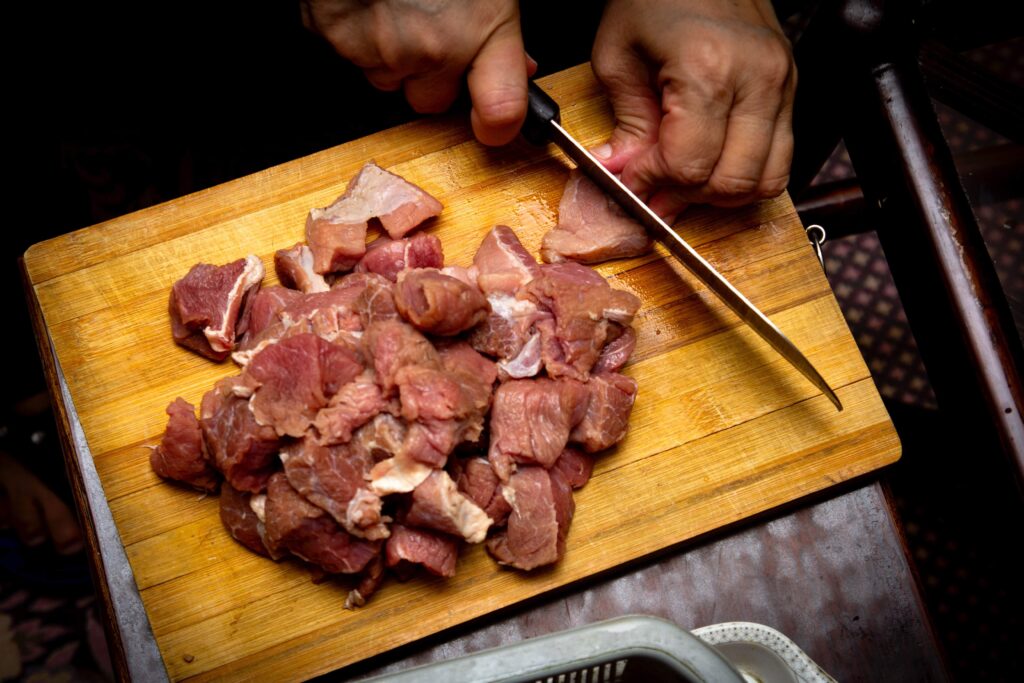
There are many benefits to feeding your dog raw meat. Raw meat is packed with nutrients that are essential for your dog’s health. feeding your dog raw meat will help keep them healthy and happy. Here are the best ways to feed your dog raw meat:
1. Get quality meat from a reputable source. This is the most important step in ensuring that your dog gets the nutritious meal they deserve.
2. Cut the meat into small, manageable pieces. This will make it easier for your dog to eat and digest the raw meat.
3. Mix the meat with some healthy vegetables or fruits. This will add even more nutrients to your dog’s meal and make it more enjoyable for them to eat.
Feeding your dog raw meat is one of the best things you can do for their health.
Meat Quality & Hygiene
The quality of the meat is important. You want to make sure that the meat is fresh and not spoiled. Spoiled meat can make your dog sick.
Hygiene is also important when feeding your dog raw meat. You need to make sure that the meat is clean and free of bacteria. Raw meat can carry bacteria that can make your dog sick.
You also need to be careful about what kind of raw meat you feed your dog. Some types of raw meat, such as chicken, can contain bones that could splinter and hurt your dog’s digestive system.
How to transition your dog to a raw diet
If you’re thinking of making the switch to a raw diet for your dog, there are a few things you need to know. The transition can be tough on your pup’s stomach, so it’s important to do it slowly and carefully. With a little bit of preparation, though, you can make the switch seamlessly. Here’s how:
1. Start by mixing a small amount of raw meat into your dog’s kibble. gradually increase the amount of raw meat until your dog is eating an all-raw diet.
2. Make sure you’re feeding your dog a variety of different meats to get all the nutrients they need. chicken, beef, and lamb are all good options.
3. If you’re worried about bacteria in raw meat, you can cook it before adding it to your dog’s food bowl.
Are other raw foods good for dogs?
Here are a few options to consider.
Organ meats, such as liver and kidney, are packed with nutrients that are beneficial for dogs. These include iron, copper, and zinc.
Fatty fish like salmon and sardines are also a good source of omega-3 fatty acids, which can help improve your dog’s coat and skin.
Vegetables like carrots, sweet potatoes, and green beans are also healthy additions to a raw diet. Just make sure they’re chopped up into small pieces so your dog can easily digest them. As always, consult with your veterinarian before making any changes to your dog’s diet.
Conclusion
In conclusion, while there are some benefits to feeding dogs raw meat, it is important to do your research and consult with a veterinarian before making the switch. There are also some important safety considerations to keep in mind. Ultimately, you should make the decision that is best for your dog’s individual needs.
FAQ
Subscribe to our weekly newsletter below and never miss the latest article.
